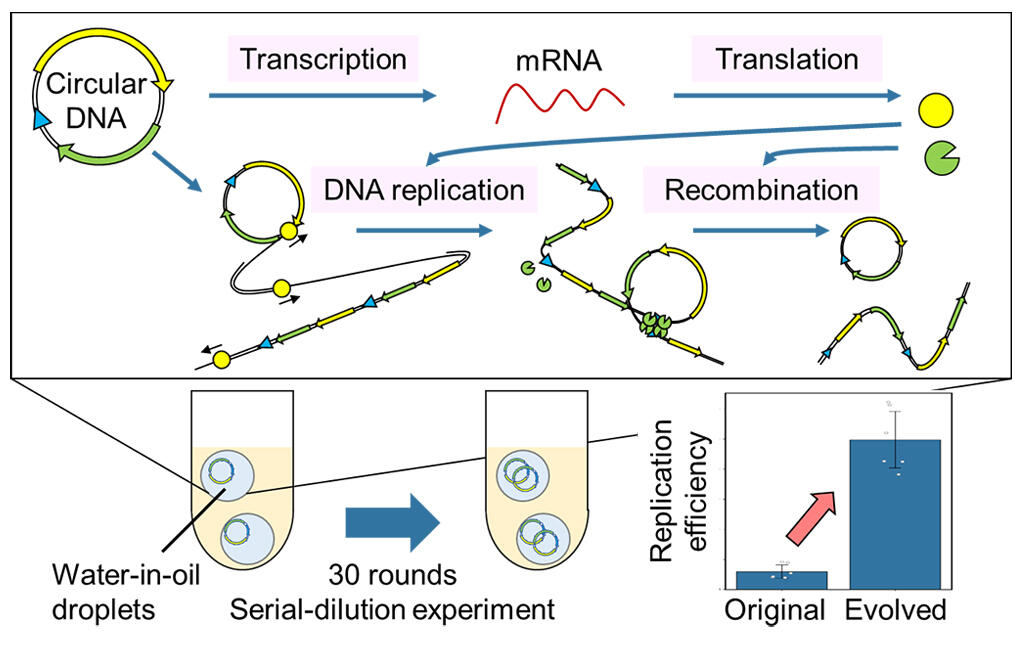For the first time in the world, the research group of Professor Norikazu Ichihashi and colleagues at the Komaba Institute for Science and Universal Biology Institute of the Graduate School of Arts and Sciences at the University of Tokyo succeeded in extracellularly inducing gene expression from DNA, a characteristic of living organisms, and evolution through continuous replication, using only inanimate materials, such as nucleic acids and proteins. This research result was achieved in the project "Development of a self-regenerative artificial genome replication-transcription-translation system" under the Team Type Research of the JST Strategic Basic Research Programs (CREST).
The ability to proliferate and evolve is a major characteristic of living organisms, which allows humans to use these organisms as a source of food and material production. However, many organisms are not convenient for use by humans, and their applications have been limited. Therefore, the research group aimed to develop artificial DNA that could proliferate and evolve.
In this study, as a first step, they constructed an in vitro system in which DNA replicates while expressing the genes it self-encodes. Furthermore, the DNA with enhanced replication abilities could evolve spontaneously across many generations of DNA replication in microcompartment structures, such as cells.
As a mechanism for long-term replication and evolution of artificial genomic DNA, two genes directly required for DNA replication in artificial genomic RNA (Phi29 DNA replication enzyme and Cre recombinase) were first encoded. When these genes are reacted in a cell-free transcription and translation system, DNA replicates in a replication mode. DNA replication coupled with this transcription and translation system was encapsulated in microscale water droplets, and over 30 passages of the reaction were performed while supplying the cell-free transcription and translation system.
Mutations are introduced into the DNA during this replication. If the mutation enables improved DNA replication, it is naturally selected because the mutation results in more copies than those of other DNA, leading to the phenomenon called Darwinian evolution. In fact, 30 passages resulted in the accumulation of multiple mutations and the evolution of artificial genomic DNA with replication abilities more than 10-fold higher than those of the original DNA.

Copyright 2021 American Chemical Society.
Professor Ichihashi commented, "Currently, this DNA is only able to replicate itself, but we believe that by adding various genes to this DNA and further optimizing it using evolutionary systems, the DNA can be developed into an artificial molecular system that contributes to material production."
■ Cell-free transcription and translation system: Reaction solution containing all factors necessary for RNA transcription from genes encoded by DNA and its translation into proteins outside the cell.
This article has been translated by JST with permission from The Science News Ltd.(https://sci-news.co.jp/). Unauthorized reproduction of the article and photographs is prohibited.




